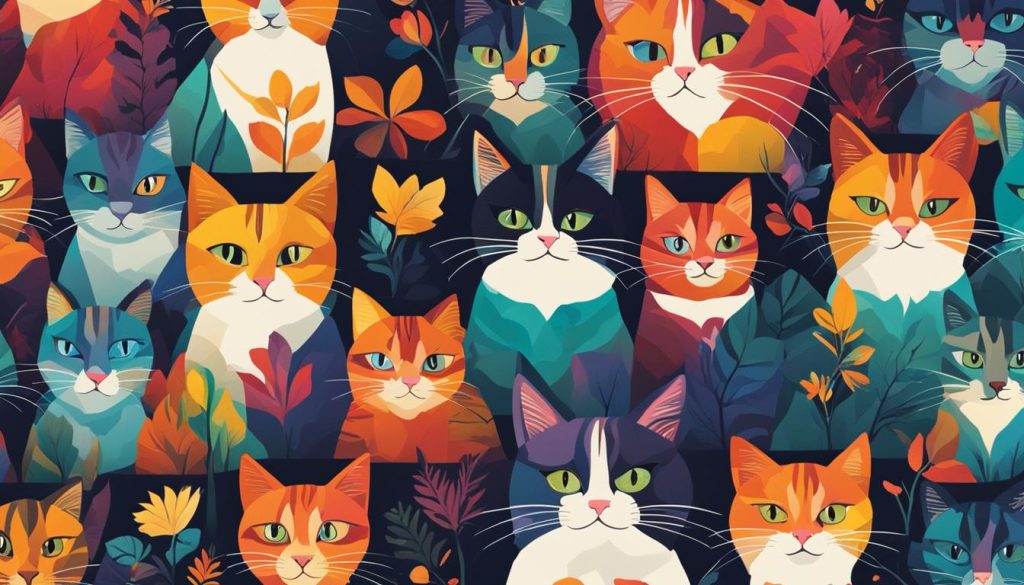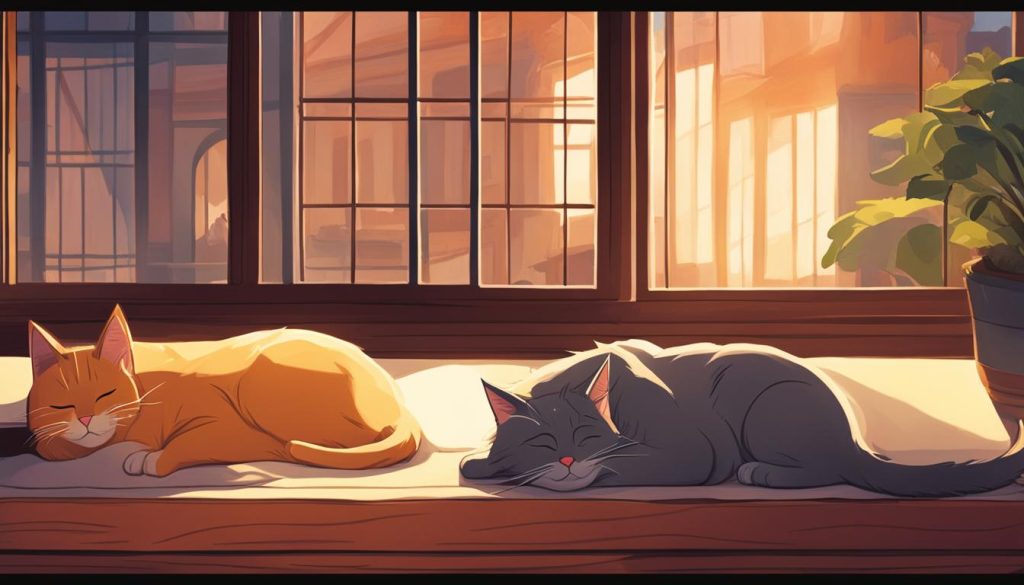Are you a cat lover? Do you think you know everything about your feline friend? Think again! We’ve compiled a list of surprising cat facts that will leave you amazed. From interesting and fun facts to unbelievable and mind-blowing ones, these feline facts will make you look at your cat in a whole new way.
So sit back, relax, and get ready to discover some truly fascinating and amazing things about your furry friend. You may even learn a few shocking and quirky cat facts that you can impress your friends with.
Cats Have a Special Collarbone
Did you know that cats have a special collarbone called the clavicle? Unlike humans, their collarbone doesn’t directly connect to their other bones. This unique feature allows cats to easily slip through tight spaces and land on their feet, even when falling from high places.
It’s a common misconception that cats always land on their feet. While they have amazing reflexes and control over their bodies, they can still sustain serious injuries from falls. However, their collarbone plays a key role in their ability to twist and contort their bodies mid-air, increasing their chances of landing safely.
So the next time you see your cat gracefully jumping from a high perch, remember that their special collarbone is helping them achieve their incredible acrobatics. Isn’t it amazing how cats have adapted to their environment over time?
Cats Can Make Over 100 Different Sounds

Get ready to be surprised by this interesting cat fact. Did you know that cats can produce over 100 different sounds? Unlike dogs who bark for a variety of reasons such as fear, aggression, or attention, cats primarily use their unique vocalizations to communicate with their owners and other cats.
Some of the most common sounds cats make include meows, purrs, hisses, and growls. Meows can be used to express a variety of emotions such as hunger, playfulness, or affection. Purring, on the other hand, is typically associated with contentment and relaxation. Hisses and growls are warning signs, indicating that a cat is feeling threatened or aggressive.
However, cats can also make some less common sounds such as chirps, trills, and even yowls. Chirps and trills are often used as greetings between cats or as a way to get their owner’s attention. Yowls, on the other hand, are more intense and can indicate pain, frustration, or even mating behavior.
Overall, the range and variety of sounds that cats can produce are truly fascinating. Pay attention to your feline friend’s vocalizations and try to decipher what they might be trying to communicate to you.
Cats Have a Sixth Sense
Prepare to be amazed – cats have a sixth sense known as proprioception! This incredible ability allows them to instinctively know where their body is in space, making them incredibly agile and skilled at landing on their feet.
You might find this surprising, but cats are very in tune with their surroundings and can sense changes in air pressure, vibrations, and even electrical fields. This sixth sense helps them to detect potential danger and navigate their environment with ease.
It’s truly unbelievable how skilled cats are at using their senses to their advantage. Even their whiskers play a vital role in providing sensory information as they navigate narrow spaces.
Next time you watch your cat jump effortlessly onto a high shelf or land squarely on their feet after a fall, you can thank their remarkable sixth sense for their impressive agility!
Feline Facts: Cats Sleep for Most of Their Lives

Do you ever feel like your cat is always sleeping? Well, that’s because they are! In fact, cats sleep for around 16 hours per day, which equals to approximately 70% of their lives. This may seem like a lot, but it’s actually an essential part of their feline nature.
Cats are crepuscular animals, which means they are most active during dawn and dusk. During the rest of the day, they conserve their energy by napping. This behavior is also a result of their evolution as hunters. In the wild, cats need to conserve energy between hunting sessions, which often take place during the early morning and late evening.
Despite their love for sleep, cats are also playful creatures. They may spend the other 30% of their time playing, grooming themselves, or just lounging around. So, if you catch your cat napping during the day, don’t worry – they’re just following their natural instincts!
Cats Sweat Through Their Paws
Did you know that cats have a unique way of keeping cool? While humans sweat through our skin to regulate body temperature, cats sweat through their paws! This surprising cat fact is not well-known, but it’s one of the many fascinating things about our feline friends.
The process of sweating through their paws is called “glandular sweating,” and it’s controlled by the sympathetic nervous system. When a cat becomes too warm, their nervous system sends a signal to the sweat glands in their paws to release moisture. As the sweat evaporates, it cools down their body temperature.
This fascinating cat fact is one reason why you might notice wet paw prints around your home on hot days. Your cat is trying to cool down by sweating through their paws, leaving damp evidence behind. So, the next time you see your cat leaving a trail of paw prints, know that they’re more than just cute imprints – they’re also a sign that your cat is cooling off.
Cats Have Whiskers Everywhere
You may think that cats only have whiskers on their faces, but did you know that they have them all over their bodies? It’s true! In addition to the vibrissae on their cheeks, cats also have whiskers above their eyes, on the backs of their front legs, and even on their upper lips.
These whiskers, also known as tactile hairs, are extremely sensitive and help cats navigate through small spaces. They can detect even the slightest changes in air currents, which can alert cats to nearby prey or potential danger.
Whiskers can also provide important sensory information. For example, the whiskers on a cat’s upper lip can help them determine if a space is too small to fit through. And because cats are such curious creatures, they rely on their whiskers to explore their environment and discover new things.
So the next time you see your cat’s whiskers twitching, you’ll know that they’re taking in a lot more information than you might think.
Cats Have a Unique Paw Preference
Did you know that your furry feline friend has a paw preference, just like humans are left or right-handed? In fact, about 90% of cats are right-pawed, while the other 10% are left-pawed.
You can easily observe your cat’s preferred paw by giving them treats or toys and seeing which paw they use to reach for them. It’s just one of the many quirky cat facts that makes them so fascinating!
Knowing your cat’s paw preference can also help you interact with them better. For example, if your cat is right-pawed, you can place their food bowl or litter box on their right side to make them feel more comfortable.
So the next time you’re playing with your furry friend, pay attention to their paw preference and see if you can spot any other quirky cat habits!
Cats Have Been Domesticated for Over 4,000 Years
Are you a cat lover? If so, you’ll be fascinated to know that cats have been our loyal companions for an incredible 4,000 years!
Yes, that’s right – ancient Egyptians were among the first to domesticate cats, and they quickly became highly revered for their skill in hunting rodents. In fact, they were even worshipped as symbols of grace and fertility.
Over the centuries, cats have become a beloved part of our lives, and it’s easy to see why. They’re playful, affectionate, and endlessly entertaining. But their history is just as amazing as their personalities.
So the next time you curl up with your furry friend, take a moment to reflect on the mind-blowing fact that cats have been by our side for over 4,000 years.
It’s no wonder they hold a special place in our hearts, and continue to surprise and delight us with their surprising cat facts.







